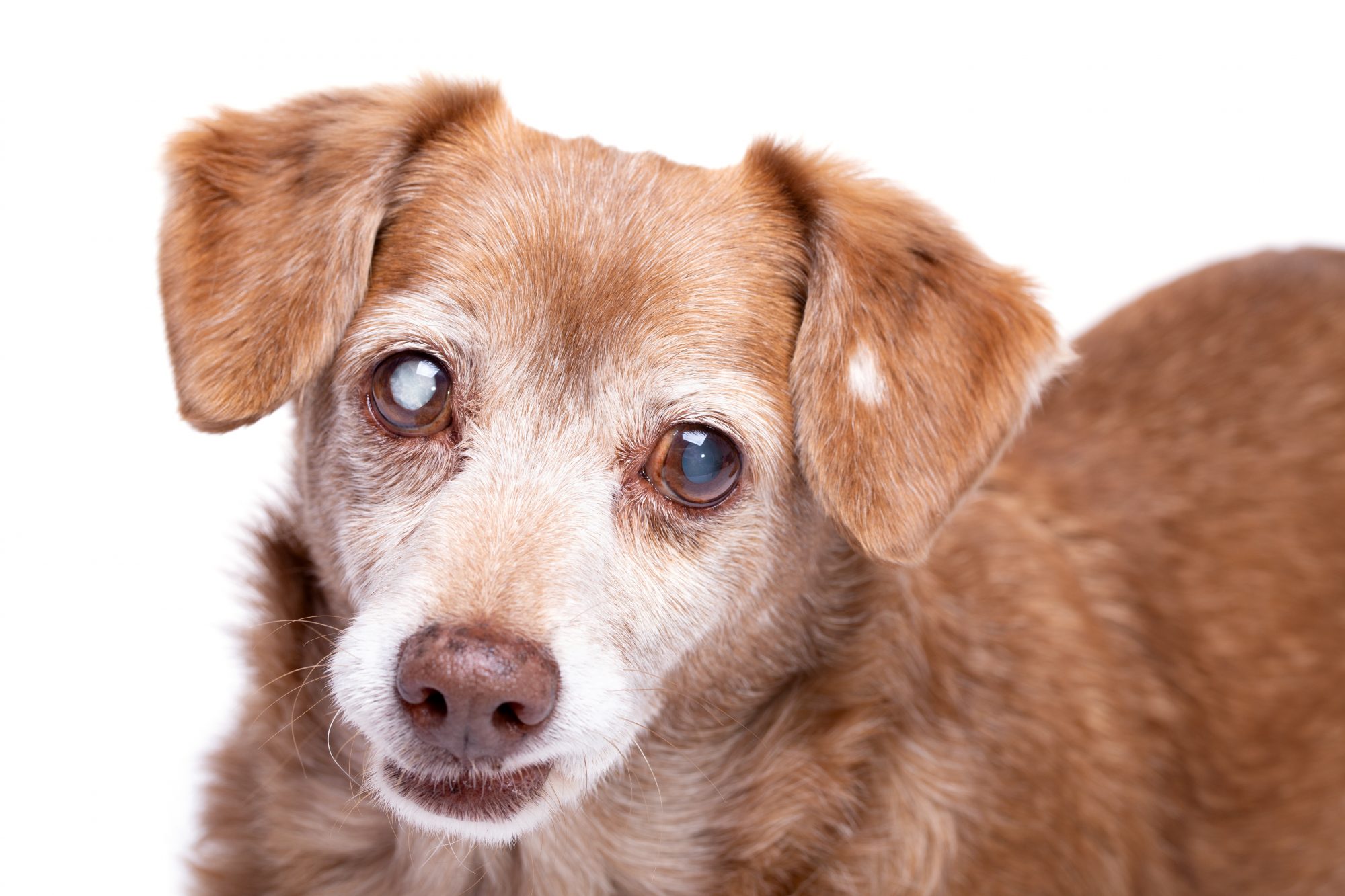Cloudy Vision: Cataracts in Dogs

Cataracts in dogs are usually easy to spot. The clouded look of the pupil gives them away. Unfortunately, many dog owners assume that cataracts just come with age and don’t think to intervene to address them. This is troubling because eye health is so important to a dog’s general health and quality of life.
The good news is that there is treatment available for cataracts so that your canine can have good vision and eye health throughout their golden years.
What Are Cataracts?
A cataract is a cloudiness that develops within the crystalline lens. Cataracts in dogs range in size, from a small dot to the complete lens. When a cataract is present, the opaque lens doesn’t permit an image to form on the retina, resulting in vision loss. Light may still pass through the lens and your pet can still see light and dark.
Cataracts are more common in older dogs, but genetics play the lead role in whether a pet develops cataracts. Breeds like Boston terriers, cocker spaniels, Siberian huskies, and miniature poodles are more likely to develop cataracts, sometimes even at less than a year of age.
Factors that lead to the development of cataracts in dogs include:
- Hereditary/genetic
- Congenital (occurring at birth)
- Diabetes mellitus
- Other eye disorders, such as glaucoma
- Trauma to the eye
- Inflammation of the eye
- Radiation or other toxic chemicals
- Electric shock
How to Tell If Your Dog Has Cataracts
Having your dog seen by a veterinarian when you discover the cloudiness is key to a better outcome. If there is associated inflammation with cataracts, it needs to be treated, usually with eye drops. If not treated, this inflammation can lead to other disorders such as glaucoma which is painful as well as vision-threatening. This would make your pet a poor candidate for surgical removal of the cataract and decrease the chances of ever being able to restore vision.
Despite popular thought, cataracts do not always lead to blindness. Lens cloudiness is the most common indicator that your dog may have cataracts. You may notice a reduction in vision. Your dog may be clumsier than normal, bump into objects, or have trouble navigating around the home and yard.
Diabetic cataracts almost always lead to blindness. One study reported that 75% of dogs will develop cataracts within one year of diagnosis with diabetes. Signs of diabetes mellitus include frequent urination, increased thirst, and weight loss.
Cataracts that diabetic patients develop often happen quite quickly, sometimes even over a couple of days! Due to the sudden onset of these cataracts, severe inflammation may occur, which should be treated as soon as possible. This will help to maintain comfort as well as to increase their chances of being able to have vision restorative surgery.
Treatment Options for Cataracts in Dogs
A lot of dogs, unfortunately, have to live with cataracts and it negatively impacts their lives. This is because many dog owners assume that vision loss is just a result of getting older. As long as there is no underlying disease, what’s the problem? This thinking is unfortunate; vision loss can create a significant loss in a pet’s quality of life.
The treatment of cataracts depends on their stage. In its earliest form, your veterinary team may recommend periodic monitoring rather than surgery to watch if the cataract continues to progress. Some patients require eye drops to control secondary inflammation.
Unfortunately, there are not any medications that can stop or reverse the progression of cataracts. Surgery is the only therapy that can remove cataracts and restore vision. A veterinary eye care team can further discuss the surgical options with you to save vision and your dog’s quality of life.
Canine cataract surgery is very similar to surgery you would expect with humans. Unlike humans, our veterinary patients need to be under general anesthesia. Using a microscope to see inside the eye, the surgeon inserts a small ultrasonic instrument into the eye to break up the cataract so that it can be removed in small pieces. From there, the surgeon will insert an artificial lens into the remaining lens capsule, which will restore vision to a near-normal state.
In some patients, the surgeon may not be able to implant an artificial lens. These dogs will still have improved vision from what it was before surgery. To increase the odds of your pet being able to have a successful surgery with a lens implant, early diagnosis and therapy are important. Once the surgery is performed, your pet will not develop cataracts again in the future.
Most facilities will require your pet to stay at least one night in the hospital for post-operative care and monitoring. Recovery from surgery is a very important part of ensuring a good surgical outcome. Recovery at home will require eye drops and weeks of restricted activity as well as rechecks with your veterinary eye care team.
Vision health is so important to living a vital life for your pet. Our team recommends annual wellness examinations with your veterinarian, as they can detect a vision problem early. If you would like more information about cataract prevention and treatment in dogs, please call the Oakland Veterinary Referral Services team.


